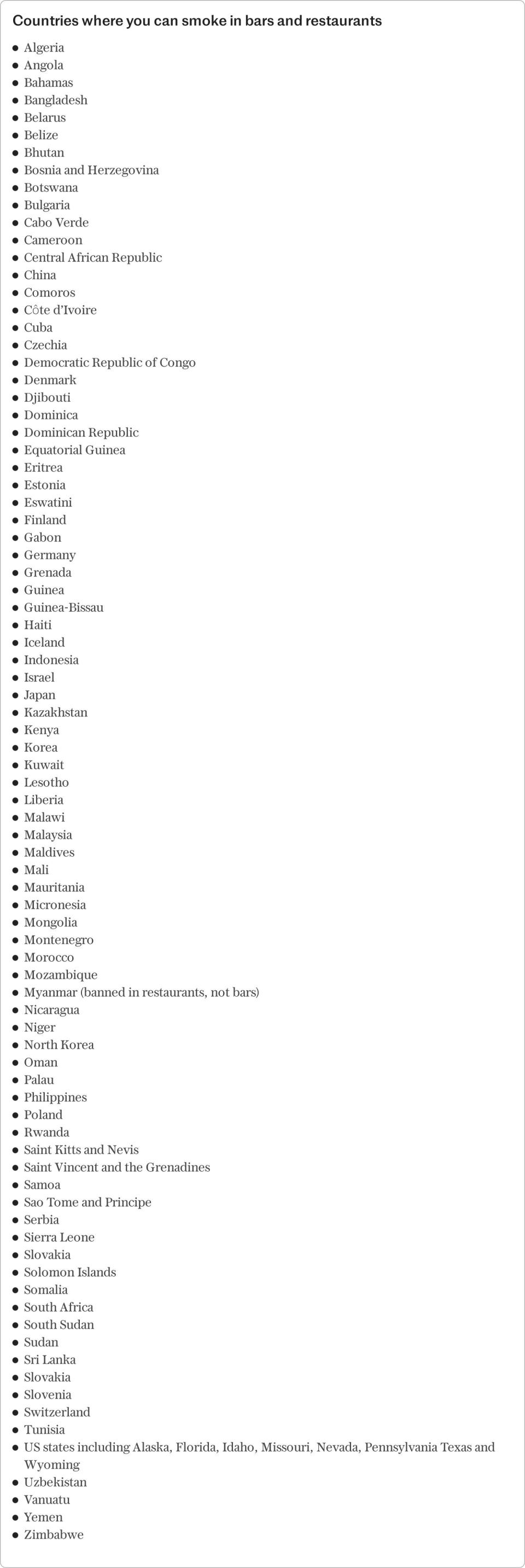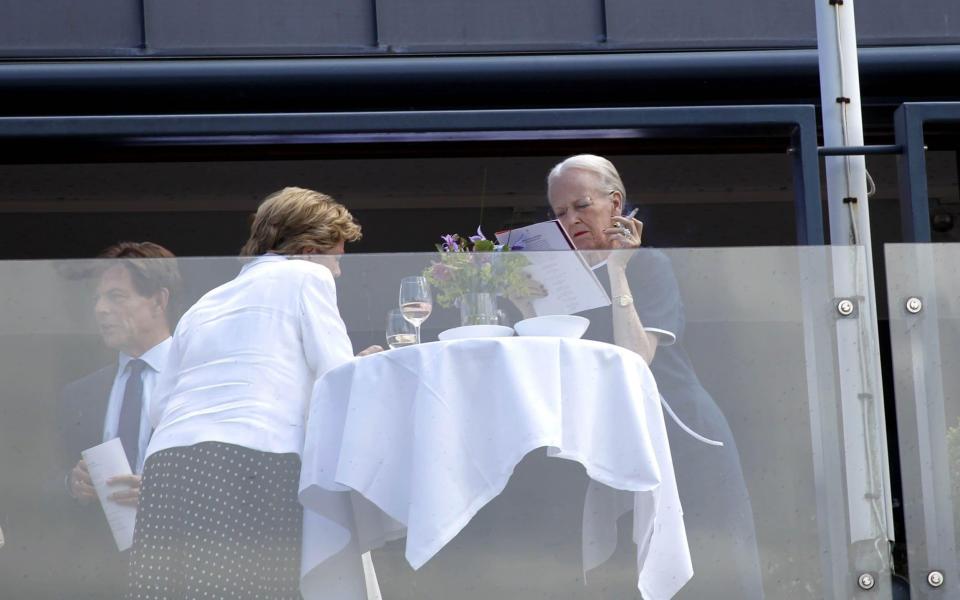Today’s vote on the Tobacco and Electronic Cigarette Bill, which aims to ban anyone born after 2009 from buying cigarettes, is the final stage of a process that began in July 2007, when the New Labor government made it illegal to smoke in bars, restaurants and nightclubs. most workplaces.
While no other country has gone as far as Britain in banning smoking (New Zealand scrapped nearly identical plans in late 2023), we are certainly not alone in phasing out smoking. Over the past few decades, many countries have introduced restrictions on smoking, and regulations have often been delegated to the regional level. There are lots of loopholes and exemptions, so when we map everything out we see the world as a patchwork of various freedoms and laws.
The dominant trend aimed at protecting children and other potential second-hand smokers is to ban or severely limit smoking in indoor spaces. According to the latest report of the World Health Organization, while in 2007 only 10 countries had a smoke-free air policy covering all indoor spaces, this number increased to 74; While 88 countries completely ban smoking in cafes and bars, 50 countries allow designated smoking rooms.
Interestingly, there is often no obvious connection between a country’s social values and its attitude towards smoking. Albania completely bans smoking in bars and restaurants. Italy does not do this. In South Africa, up to 25 percent of a bar or restaurant is allowed to be designated as a smoking area, but stricter laws are on the way.


In Japanese restaurants and bars, smoking is allowed in all areas (although in practice many such places restrict or prohibit smoking). Danes can still enjoy smoking in smaller bars, but most direct smokers to the streets. Meanwhile, smoking is banned in all indoor areas in Benin.
In the United States, the law varies from state to state and may vary depending on neighboring towns and counties. Besides economics, attitudes towards freedom are also a factor. Many Las Vegas casinos continue to allow smoking indoors. It’s also allowed in bars, taverns and lounges where minors are banned or don’t serve food, strip clubs and, as you’d expect in business-friendly America, some floors of tobacco-related trade shows.


Smoking bans are so widespread these days that it can be quite shocking to walk into a restaurant on holiday and realize that smoking is still allowed indoors. I remember going to Porto about ten years ago, where smoking was already a social sin in the UK, and my surprise when I saw a trough under the counter in a hole-in-the-wall restaurant filled to the brim with cigarette butts.
Of course, indoor smoking bans do not always go as planned. Some German states have banned smoking in bars, restaurants and sports stadiums, but compliance is limited where the law applies across the country, according to the NGO coalition Smoke Free Partnership.
And not every country imposes restrictions; In some countries the mood regarding public smoking is reversing. In 2010, Bhutan was praised globally for becoming the first country to ban tobacco sales and smoking in public places. The ban lasted for more than a decade, but ironically, the Covid-19 pandemic “forced policymakers to change course” and tobacco sales were legalized again. Private rooms in bars and discotheques have once again become smoking-free zones.


If you are looking for a smoke-free holiday, South America is the right address for you. When Paraguay passed anti-smoking legislation in December 2020, it became the first major region to achieve smoke-free status in public spaces. At the other end of the spectrum, the WHO names India, Tanzania and Indonesia as countries that maintain only a small percentage of their populations with smoke-free zones.
As a former smoker, I have to say that I generally approve – albeit reluctantly – of the UK’s proposed legislation, but I can’t forget some fond memories of smoking. I still remember the two InterRail journeys I took in the 1980s through the romantic haze of cigarette smoke on railway platforms, and I can still remember the pungent smell of black tobacco – exotic, European, a little dirty.
I also remember a visit to the King Eddy Saloon in Los Angeles; Here smokers had to continue their habit in a closed, glass-walled box inside the bar. You could see the area filling with smoke, like some kind of deadly experiment. Charles Bukowski, a former regular, wrote a poem about it. Long flights seemed less demanding and more social when smoking was allowed. You met more interesting passengers in the back rows.
So, as the UK imposes further restrictions on smoking, will tobacco lovers go on cigarette-collecting expeditions, as pot smokers in Amsterdam have been doing for decades? Maybe. There are still plenty of options, at least for now, but they’re dwindling as the year goes on.